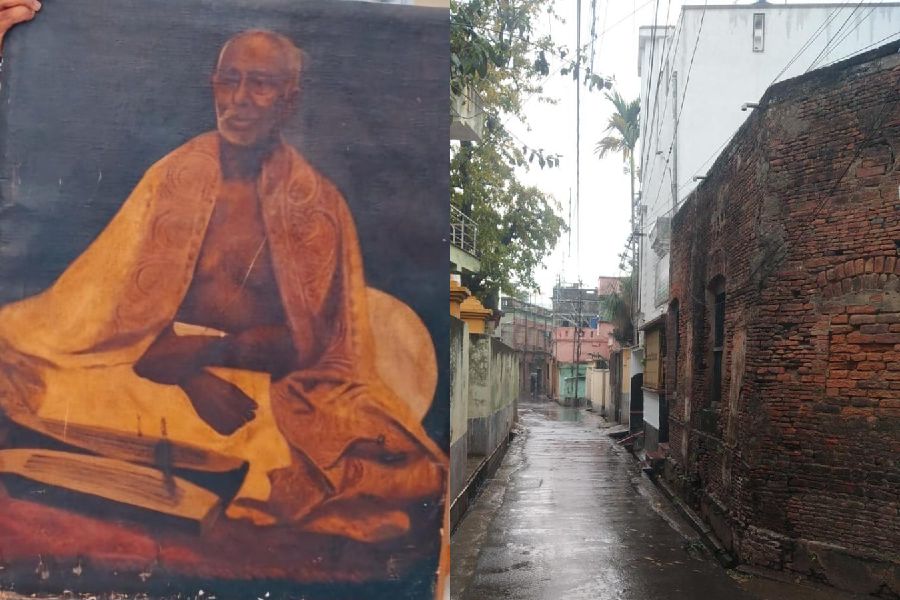The Bengal government will soon set up a museum and library in memory of the 19th century Ayurveda expert, Kabiraj Gangadhar Sen Roy, the project to be jointly funded by the state and the Centre.
Sen Roy also pioneered a residential institution for Indian traditional medicine to create a pool of Ayurveda experts to serve society. He taught students for free at the institution.
Born in 1798 in Magura, currently in Bangladesh, Sen Roy spent most of his life in Murshidabad’s Saidabad. He passed away in 1885.
He is also the author of the highly acclaimed commentary on the Charaka Samhita, named Jalpakalpataru. He was also a prominent Ayurveda scholar in undivided Bengal, authoring around 400 books.
In May this year, a team from the state government, led by its director of Ayurveda Dr Debasish Ghosh, visited Sen Roy’s house and submitted a proposal to the central government to establish the Kabiraj Gangadhar Sen Roy Memorial Museum and Library in Saidabad.
The Centre approved the proposal to build a museum after Sen Roy’s memory.
“Sen Roy ran a free residential school for Ayurvedic medicine at his home in Murshidabad. His contributions to modern Ayurvedic treatment are actually invaluable. This is why the state government has proposed creating an institution at his residence, which still exists, and once built it would greatly benefit researchers and Ayurvedic practitioners,” said Ghosh, the director of Ayurveda.
“This will be the first museum and library in the state dedicated to an eminent Kabiraj of Bengal,” Ghosh added.
The museum, when it is built, will feature various pieces of furniture and medicinal equipment, as well as an oil painting of Sen Roy.
In his long and illustrious career, Sen Roy was also acclaimed as the Kabiraj of the zamindars and nawabs in Murshidabad.
A source in the state government said that the public works department has been assigned to restore and repair the century-old house of the Kabiraj.
The state and central governments have jointly funded ₹50 lakh for the project, with a 60:40 funding ratio.
Asit Panja, the nodal officer for Ayurveda manuscriptology at the National Institute of Ayurveda (NIA) in Jaipur, Rajasthan, who has extensively researched the Ayurveda scholar of Bengal, noted that researchers from even the University of Vienna had visited the NIA in January this year to study the works of Sen Roy.
“We have been researching Gangadhar Sen Roy’s contributions since 2018. We have, in fact, also travelled to Bangladesh to trace his roots and connections there. We welcome the proposal (of the Bengal government) to establish a museum and library in honour of such an icon of Ayurveda,” said Panja.
Biswajit Ghosh, an Ayurveda practitioner in Malda, visited Sen Roy’s house on behalf of Panja recently.
Ghosh, based on his findings, has also submitted a detailed report on the condition of the house to Panja.
The Charaka Samhita is a Sanskrit text on Ayurveda. Along with the Sushruta Samhita, it is one of the two foundational texts of Ayurveda. Modern Ayurveda draws its
lessons from the two treatises.

